


That is what Ellery Queen has been called, and from tens of thousands of Queen fans, readers, and radio listeners, comes a roar of approval. Here are eleven of the slick, tricky young investigator's most amazing adventures, each one an appetizing snack for the gourmet at the table of thrills, action, deduction.
|
|
| "Eleven Detective Tales - All amazingly clever... daring, extraordinary and exciting." -- Boston Globe | |
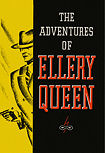 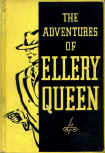  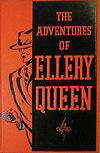 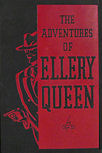 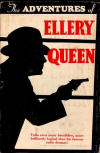 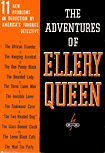  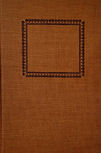  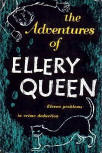 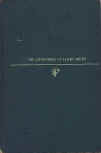 |
|
| Above: The first books published sometimes had identical front covers. The spine of the books/dust cover only differ in the publisher's logo. Top row left to right: Both dust cover and hard cover for Stokes, Grosset & Dunlap with two hard cover variations and another dust cover variation. Bottom row left to right: The Triangle Books edition, with a dust cover and 3 hard cover variations and finally dustcover and hard cover for World Publishing Company, Tower Books edition (Click on the covers to see the differences) * | |
| The Sydney Mail Royal Jubilee
Number, May 8. 1935 "IN his new volume, 'The Adventures of Ellery Queen' (Victor Gollancz — Dymock's), Mr. Ellery Queen has collected eleven of his short stories and grouped them under one head. Like all of this author's work, these stories are most ingenious and will test the reader's powers of deduction to the utmost. Perhaps the best of them are 'The Adventure of the African Traveller,' 'The Adventure of the Three Lame Men,' and 'The Adventure of the Seven Black Cats.' However, they are all well worth reading, despite the fact that at times the reader will feel like giving the amateur detective 'one to go on with' for being 'so beastly superior.'' |
|
Although a series of short-stories still an intro by JJMcC is provided.
EQ's early short stories (1933 - 1935) are notable for the
substance and complexity of their plots. EQ's first short story, "The One Penny
Black" (1933) and "The Glass Domed Clock"
(1933), share some common
features. Both deal with dealers in precious objects (stamps and gems, respectively), and
form a portrait of the world of collectors, anticipating The Chinese Orange Mystery. Both have an
ethnic character, the first from Germany, the second from Czarist Russia. Both have a plot
two levels deep, where Ellery unearths first a main plot, and then another behind it. The
first story is weaker; the second is a gem that starts EQ's interest in dying messages. The early stories shows signs of influence from Morley's The Haunted Bookshop
(1919) and Doyle's "The
Blue Carbuncle". dying messages. The early stories shows signs of influence from Morley's The Haunted Bookshop
(1919) and Doyle's "The
Blue Carbuncle". |
|
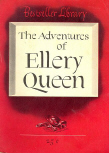 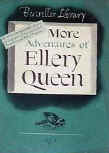 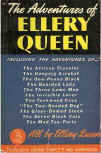 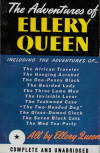 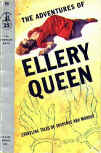    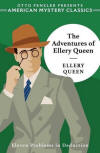 |
|
| "The Teakwood Case"
(1933) is a quintessential early EQ, investigate a situation
in-depth
puzzler. It adopts the same approach as such novels as
The French Powder Mystery
(1930).
Ellery learns more, then deduces some more, then gets deeper in
investigation,
precipitating more things happening, followed by more deductions... The chain of
deductions ultimately becomes very satisfying. The story also shows
EQ's interest in
symmetric patterns. "The  Two-Headed Dog" (1934)
is a combination puzzle plot and
"Nancy Drew type" adventure story (ghost and treasure at sinister cabin). The mystery
solution is unveiled at the end, Agatha
Christie style, without the sort of intermediate deductions of "The Teakwood
Case". This story is quite entertaining, with good New England atmosphere, and its
solution is fairly clever. Two-Headed Dog" (1934)
is a combination puzzle plot and
"Nancy Drew type" adventure story (ghost and treasure at sinister cabin). The mystery
solution is unveiled at the end, Agatha
Christie style, without the sort of intermediate deductions of "The Teakwood
Case". This story is quite entertaining, with good New England atmosphere, and its
solution is fairly clever."The Hanging Acrobat" (1934) is poor, aside from some vaudeville lore; it reads as if EQ were trying to add some spice to his tales to increase their sale ability, an experiment he did not repeat, although he came close with the perversity of "The Bleeding Portrait" (1937). Some of the best tales in the collection are the last.  "The Seven Black Cats"
(1934) is very
clever. "The Mad Tea Party"
(1934) is a classic of misdirection. EQ picked it as
his best short story; after Agatha
Christie's "The Affair at the Bungalow", it is the subtlest and most
deceptive of all detective short stories. It was made into a superb and faithful TV show,
as an episode of the 1975
Ellery Queen TV
series.
(Michael E.Grost) "The Seven Black Cats"
(1934) is very
clever. "The Mad Tea Party"
(1934) is a classic of misdirection. EQ picked it as
his best short story; after Agatha
Christie's "The Affair at the Bungalow", it is the subtlest and most
deceptive of all detective short stories. It was made into a superb and faithful TV show,
as an episode of the 1975
Ellery Queen TV
series.
(Michael E.Grost) |
|
| One of the finest deductive hours of amateur
criminologist Ellery Queen occurs in “The Adventure of the
Mad Tea Party.” When Ellery arrives during a thunderstorm at the isolated
Long Island mansion of wealthy Richard Owens, he steps—literally—right into
the midst of a scene from Alice in Wonderland. There in the living
room, he sees a dormouse nearly six feet tall, a white rabbit also the size
of a human being, a man in a tall beaver hat buttering toast, and a lovely,
willowy girl in a child’s dress of Victorian days, with long white
stockings, black pumps, and blonde hair to her waist. All are seated around
a tea table. Ellery is a bit taken aback — but it’s just a rehearsal for a
play skit planned as a present by Owens for his son’s ninth birthday
tomorrow. The costumes have been borrowed from the Broadway hit Alice
by its charming star Emily Willowes, who plays Alice to Owens’s Mad Hatter. A fun idea for a weekend house party, but tensions that aren’t funny at all begin to flow between Owens, who gets meaner with each drink, and his bullied wife Laura, and between Gardner, the architect who built Owens’s mansion, and his red-headed, hot-eyed, restless wife and Owens’s shrewd mother-in-law. Ellery goes to bed early. In the morning, he is greeted with startling news: sometime during the night, Owens has disappeared. Apparently, Owens is still wearing his eye-catching Mad Hatter’s costume; his other clothes are neatly in place, his bed unslept in. Ellery suggests waiting before notifying the police. Perhaps Owens has merely gone for an early morning walk — but the day wears on into evening and still there is no trace of Owens anywhere—and then the mad gifts begin to arrive at the door.... Ellery sets to work, amid puzzling clues that are Carrollesque in all their aspects, including a carefully hand-delivered letter which turns out to be absolutely empty and an electric clock that “has a disappearing quality, like the Chesire cat”—now you see it, now you don’t. Queen himself calls this “one of the most remarkable cases in my experience.” This frequently reprinted short story is one of the finest—indeed, perhaps the finest—of all Queen’s shorter exploits. It is no wonder that authors Frederic Dannay and Manfred B. Lee— chose this story for inclusion in their majestic anthology of the classic tales of crime and detection, 101 Years Entertainment (1941). (The Armchair Detective v19n02 [1986-Spring]) |
|
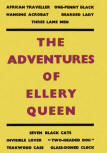 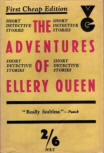    |
|
| Brisbane Telegraph - "Flow
of Fiction", July 6. 1935 "The same qualities of superiority pervade the eleven short stories that comprise the volume of "Adventures." Here again, there is resourceful invention wedded to a fertile imagination and a ready wit, an innate sense of humor providing a leaven of quiet fun which adds piquancy to situations that are usually grim enough. There is excellent entertainment in these miscellaneous specimens of the Queen detective instinct." |
|
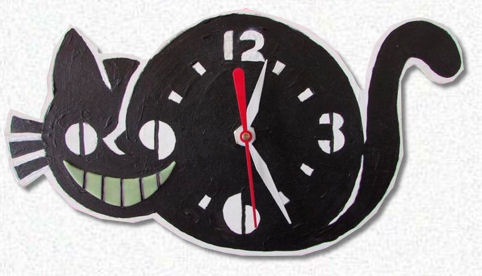 |
|
|
|
|
Other articles on this book (1) Reading Ellery Queen - The Teakwood Case Jon Mathewson (2) Reading Ellery Queen - The One-Penny Black Jon Mathewson (3) Reading Ellery Queen - The African Traveler Jon Mathewson (4) Reading Ellery Queen - The Two-Headed Dog Jon Mathewson (5) Reading Ellery Queen - The Hanging Acrobat Jon Mathewson (6) Reading Ellery Queen - The Three Lame Men Jon Mathewson (7) Reading Ellery Queen - The Glass-Domed Clock Jon Mathewson (8) Reading Ellery Queen - The Mad Tea Party Jon Mathewson (9) Reading Ellery Queen - The Seven Black Cats Jon Mathewson (10) Reading Ellery Queen - The Invisible Lover Jon Mathewson (11) Reading Ellery Queen - The Bearded Lady Jon Mathewson (12) Dead Yesterday Nov 12. 2022 |
|
|
*
Interested readers should know
that the icons/covers
of books, used throughout the
website have extra
descriptions/information not
included in the text on the same
page. Pointing your cursor at
the icon/cover used to reveal
this extra information. To achieve the same effect Firefox users can install an add-on called 'Popup ALT Attribute'. When installed pointing your cursor at an icon/cover results in showing you the details or additional information. |
|
Copyright © MCMXCIX-MMXXV Ellery Queen, a website on deduction. All rights reserved. |